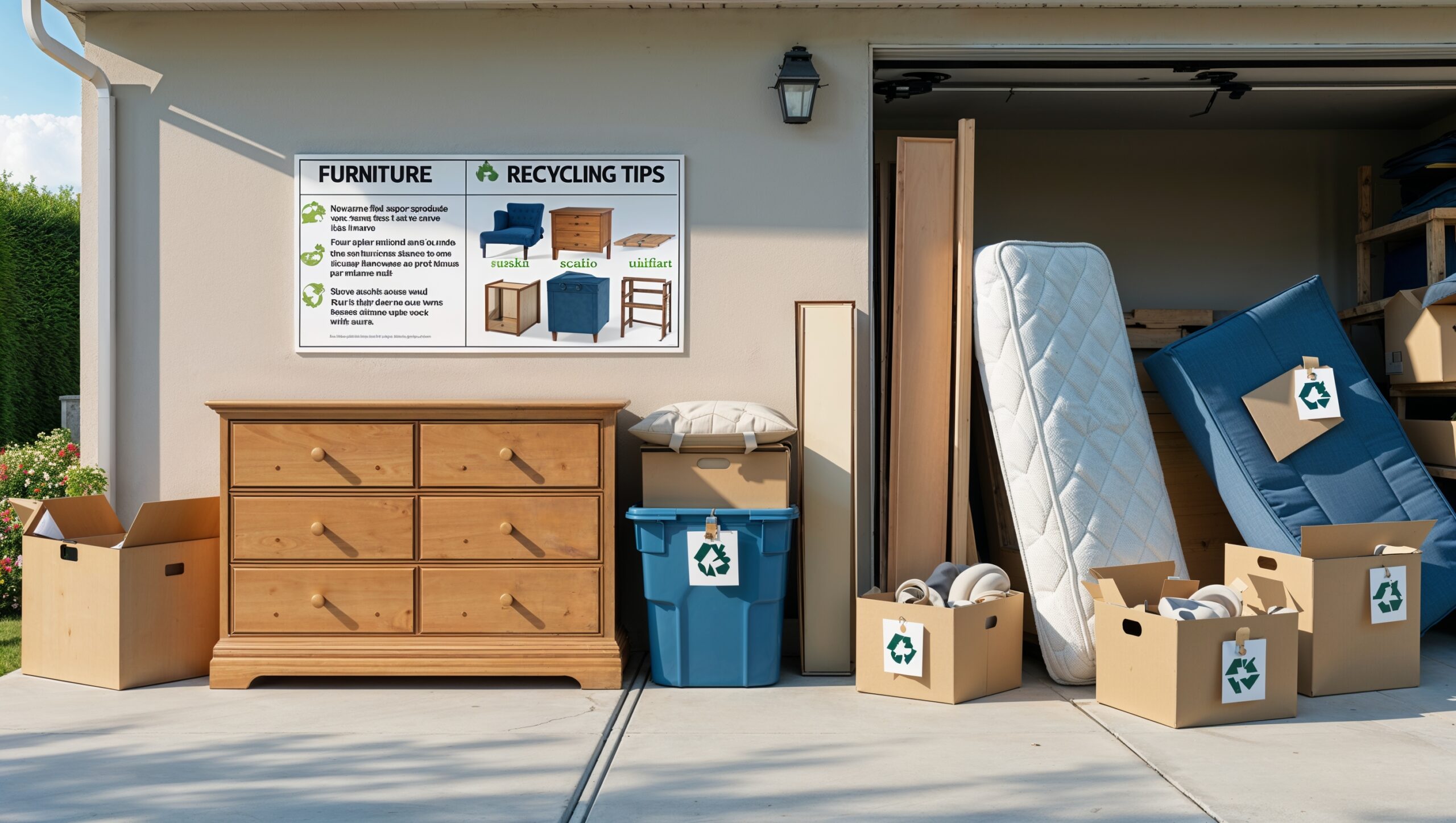Decluttering your home can be freeing — until you realize you have an old couch, broken chair, or unused mattress sitting in your garage or hallway. Bulky items are some of the hardest to dispose of responsibly, but with a little effort, many can be recycled, reused, or repurposed instead of ending up in a landfill.
In this article, you’ll learn how to recycle or donate large household items like furniture, mattresses, and appliances — and how to make eco-friendly choices when replacing them.
Why Bulky Waste Is a Big Problem
Large items take up a massive amount of landfill space. They also:
- Are difficult to transport
- Often contain materials that are hazardous or hard to decompose
- Could be reused or recycled, but usually aren’t
- Can leak chemicals into the soil if improperly disposed
Responsible disposal saves space, materials, and environmental harm.
Step 1: Evaluate the Item’s Condition
Before you think “trash,” ask yourself:
✅ Can it be:
- Donated?
- Repaired?
- Sold or given away?
- Taken apart for materials?
Only send items to recycling or disposal if they can’t be reused in some way.
Step 2: Donate or Sell Usable Items
If your furniture or item is still functional:
Try donating to:
- Local shelters or churches
- Habitat for Humanity ReStores
- Thrift stores (call ahead to confirm what they accept)
- Online platforms (OLX, Facebook Marketplace, Freecycle, Buy Nothing groups)
Make sure the item is clean and safe to use.
Step 3: Recycle Through Specialized Services
Recycling large items requires different services than your weekly curbside bin.
♻️ What can often be recycled:
- Wood furniture (non-treated): used for mulch or energy
- Metal frames and parts: sent to scrap metal recyclers
- Mattresses: up to 80% of materials can be reused
- Appliances: contain metal, plastic, and even refrigerants
- Electronics and TVs: require e-waste handling
Check your city’s website or search for “bulk item recycling near me.”
Some municipalities offer:
- Scheduled pickups for large recyclables
- Drop-off events for furniture and electronics
- Partnerships with recycling companies or charities
Step 4: Break It Down (If Needed)
If no one can collect your item as-is, consider disassembling it:
🛠️ Disassemble into:
- Wood
- Metal
- Plastic
- Fabric or padding
Separate materials into categories to increase the chance that parts can be recycled individually.
Note: Wear gloves and follow safety precautions when breaking down furniture.
Step 5: Avoid Dumping at the Curb
Leaving large items on the sidewalk may seem convenient, but it’s often illegal — and rarely results in proper disposal.
🛑 Avoid:
- Dumping on public property
- Leaving items in alleys or vacant lots
- Placing items next to dumpsters without permission
Improper disposal can result in fines — and the item still ends up in the landfill.
Step 6: Consider Upcycling or Repurposing
Get creative with old pieces:
🪑 Ideas:
- Turn an old dresser into a bathroom vanity
- Convert a headboard into a garden bench
- Use wood slats from a broken bed frame for shelves
- Transform a coffee table into a pet bed
Pinterest and DIY blogs are full of inspiration for giving old items new life.
Step 7: Look for Take-Back or Trade-In Programs
Some furniture and appliance stores offer buy-back or haul-away services when you purchase something new.
Examples:
- Mattress companies that include removal with delivery
- Electronics stores offering trade-ins
- Appliance retailers that remove your old unit for recycling
Ask before you buy — you might avoid the disposal hassle entirely.
Sustainable Furniture Shopping Tips
When replacing items, make waste-conscious choices:
- Buy secondhand when possible
- Choose modular or repairable designs
- Look for furniture made from recycled or sustainable materials
- Invest in high-quality pieces that last longer
- Support brands that offer closed-loop systems
Smart buying reduces future waste.
Make Room — Without Making Waste
Recycling large household items takes effort, but the payoff is big. You free up space in your home and keep valuable materials out of landfills.
So the next time you upgrade your sofa or clear out your garage, remember:
Responsibly parting with your things is part of sustainable living.
